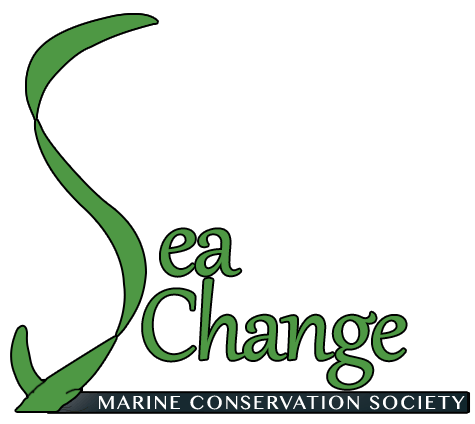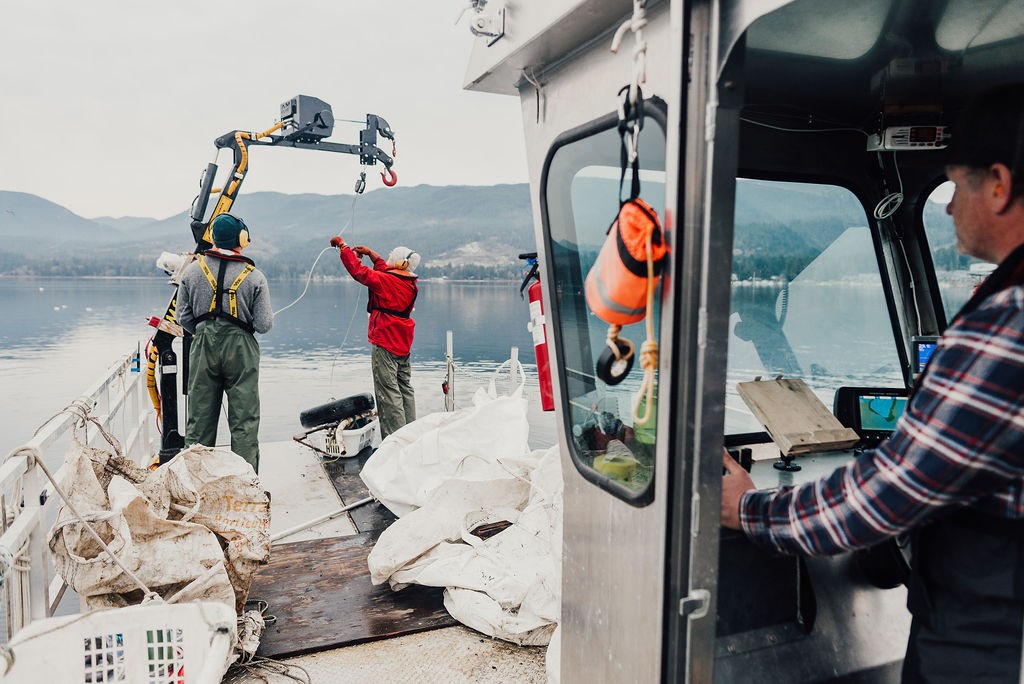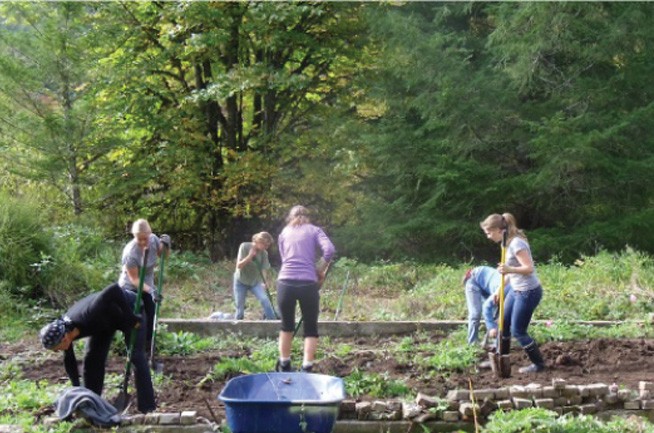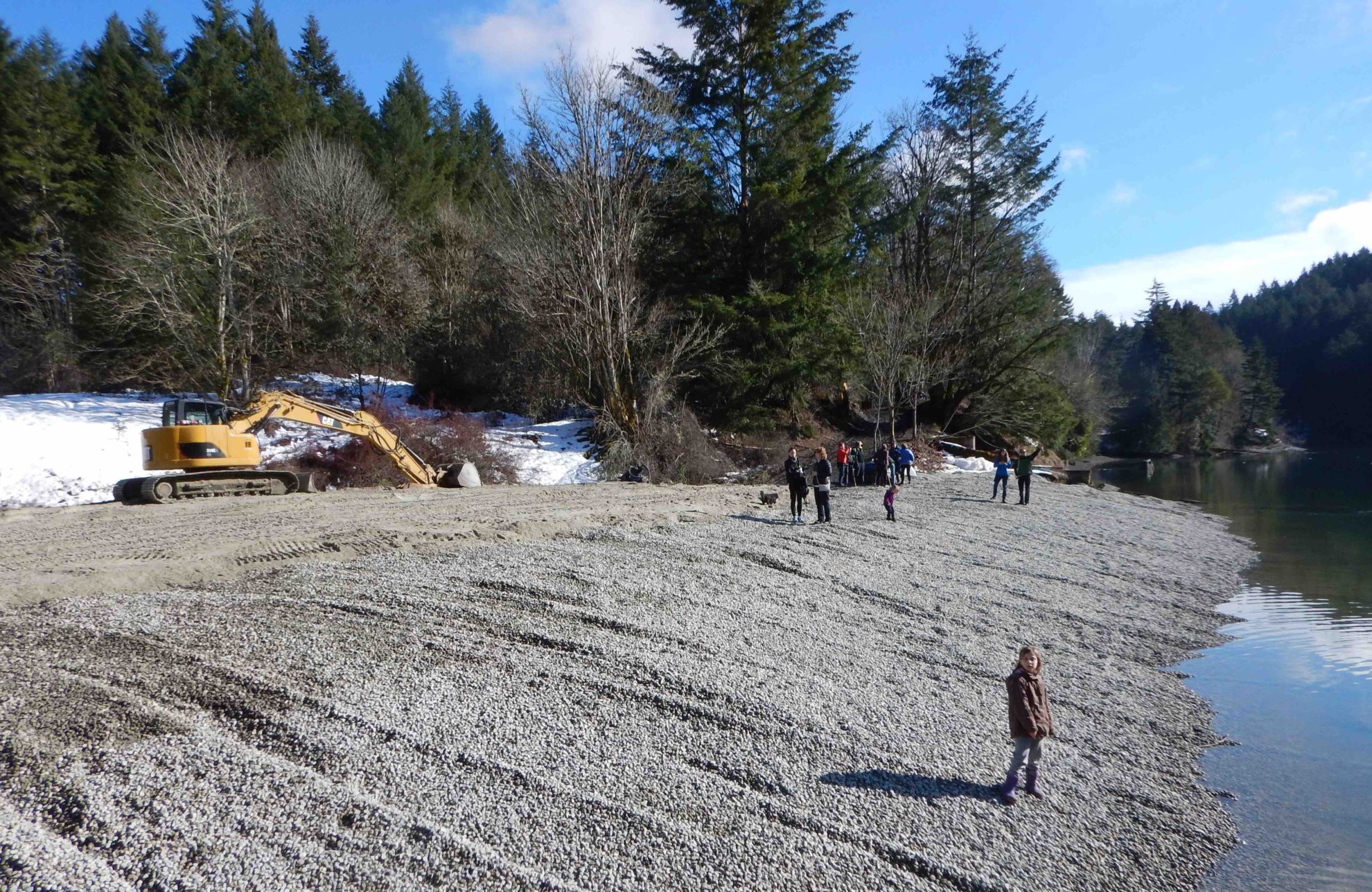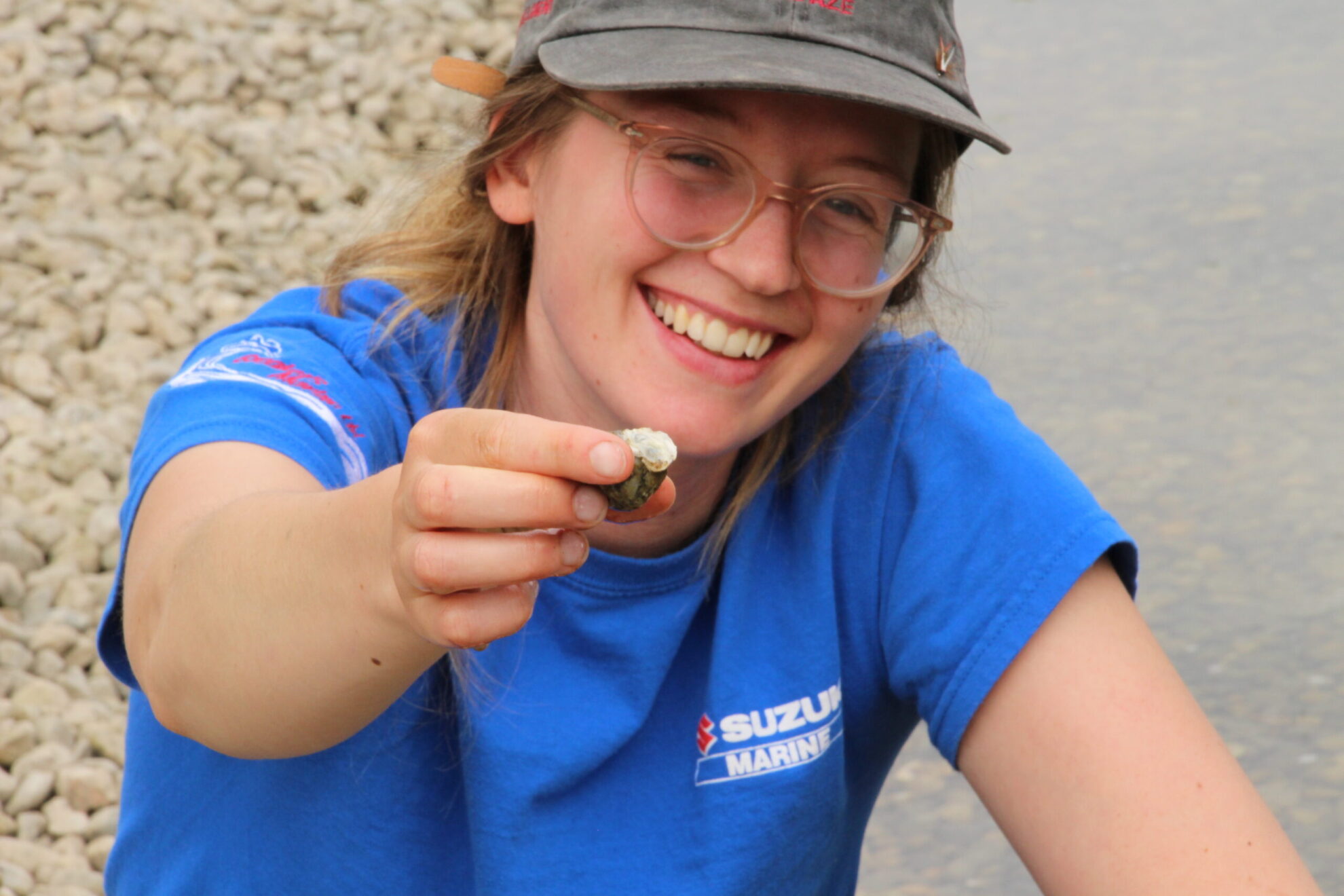RESTORATION
In 2000, SeaChange restored 1800 eelgrass shoots in Tod Inlet, SṈIDȻEȽ (pronounced sngeet-kwith) with community and government support.
Little did we know this was the beginning of an odyssey of ecological and community restoration in the Salish Sea. Today we engage communities in restoration of terrestrial native vegetation along shorelines and of course eelgrass!

Salish Sea Nearshore Habitat Recovery Project
In 2017, SeaChange was awarded a 5-year Coastal Restoration Fund grant in the amount of $1.3 million to support the recovery of nearshore marine habitats in four regions: Gulf Islands, Howe Sound and Burrard and Sechelt Inlets.
This community based project entails native eelgrass, marine riparian restoration and underwater debris removal from nearshore areas where eelgrass is impeded. See more details on each of the four working areas below. See high level results below!

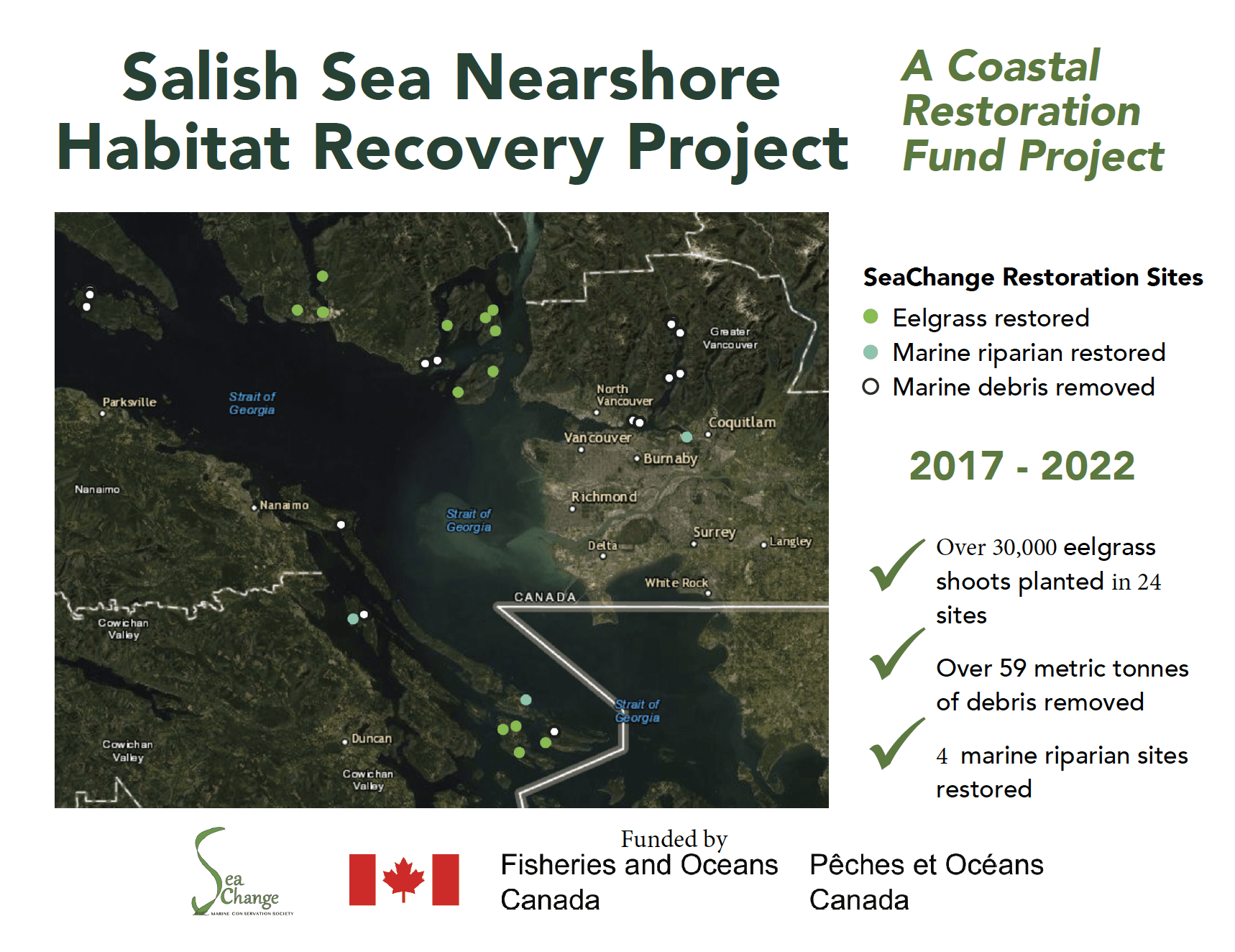
Filmmaker Bob Turner takes to the water to explore the impact of boat moorage on the eelgrass meadows in Kwil’akm (Mannion Bay), Nexwlélexwem (Bowen Island). Bob speaks to SeaChange crew to learn about eelgrass restoration and local efforts to encourage use of eelgrass friendly moorage systems. A voluntary No Anchor in Eelgrass Zone will be installed in the early spring of 2021 with the support of the Bowen Island Municipality. Learn more about eelgrass friendly moorings here.
Nikki Wright from SeaChange and Maria Catanzaro from the Pacific Salmon Foundation set out on a road trip primarily south of the 49th Parallel in the summer of 2019. Our mission was to meet with scientists and restoration practitioners who are attempting to answer the same questions we have in Canada – how is climate change impacting nearshore marine ecosystems and what we can do about it? This introductory video will provide a glimpse into the challenges being experienced in the Salish Sea. It will be followed by a series of videos focused on emerging issues and practical steps to improve conservation and restoration efforts, with a focus on eelgrass.

Restoration Programs
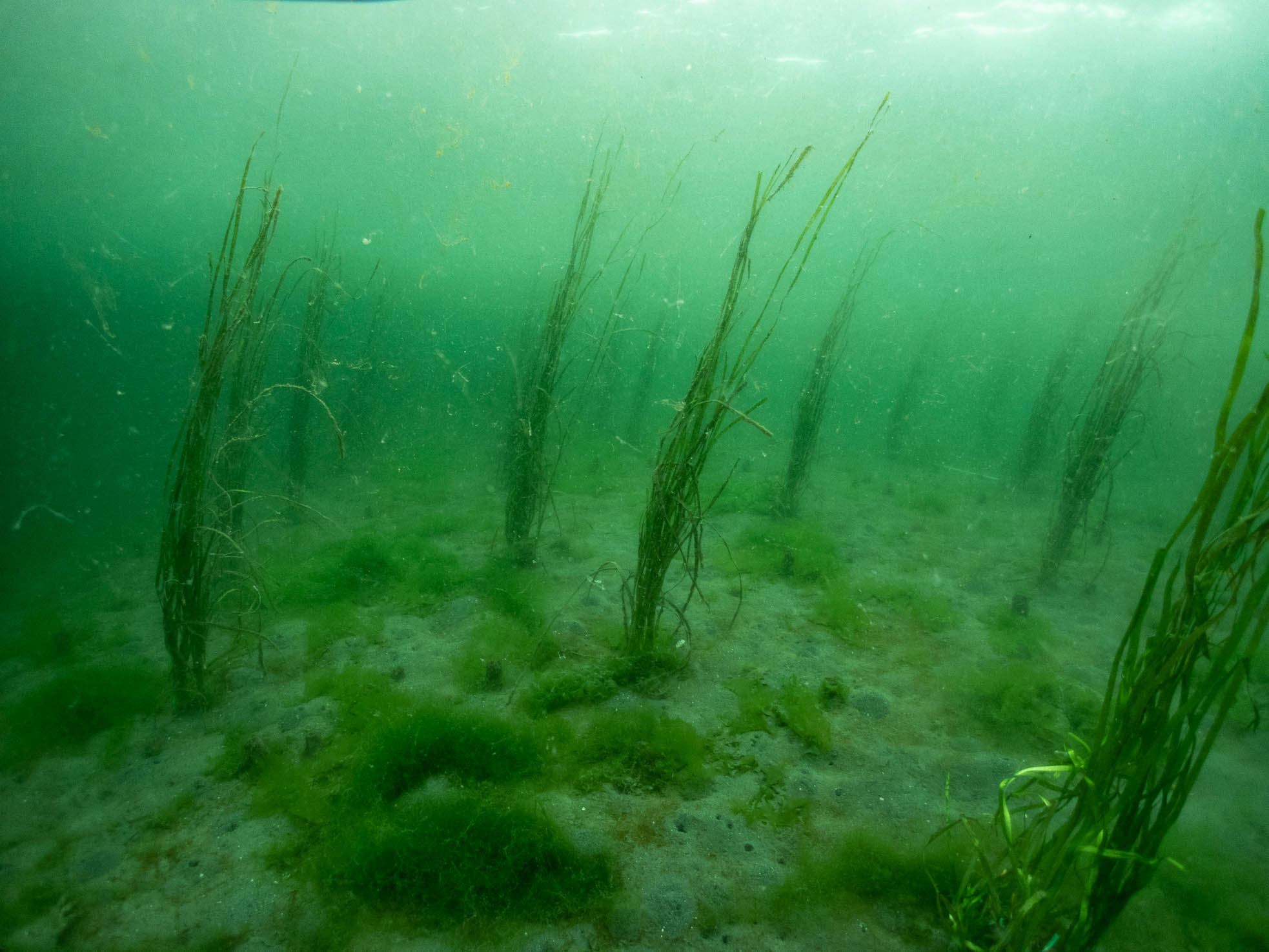
Eelgrass Restoration
We initiated coast-wide eelgrass mapping, restoration and monitoring from the lessons learned from restoring eelgrass in SṈIDȻEȽ in 2000. Our strategy is to locate and restore sites that historically had eelgrass present. We transplant between 500 and 1000 eelgrass shoots into a test plot. If restoration is successful. as indicated from monitoring, we expand the transplant area with additional eelgrass shoots.
We employ an expert team of WCB certified SCUBA divers to harvest shoots from healthy beds near the restoration site. We then invite volunteers to prepare the shoots with small metal washers for the divers to transplant. Currently we are prioritizing sites that already have some protection, such as an adjacent upland park, and in areas that have habitat connectivity (salmon bearing stream, for example).
Marine Debris Removal
In 2015 SeaChange assisted the removal of 52 tonnes of underwater debris from Genoa Bay in the Cowichan Estuary to expand area for eelgrass restoration. Since it gave us such a thrill to see all the scrap metal, old barges and ropes removed, we decided to do the same for SṈIDȻEȽ (Tod Inlet).
During the winter of 2016-7 we used SCUBA divers, lift bags, work floats, and, for the bigger debris, a barge and crane, to remove debris mapped by summer students during the summer of 2016. This is part of a 100 Year Plan for the recovery of this special estuary. We look forward to doing more of this recovery work to make the estuary vibrant once again.
Other sites for debris removal are Burgoyne Bay (Xwaaqw’um) on Salt Spring Island, Degnen Bay on Gabriola Island, Porpoise Bay in the Sechelt Inlet and Burrard Inlet.
SṈIDȻEȽ Resiliency Project
After eight years of intensive restoration efforts with SeaChange, the SṈIDȻEȽ Resiliency Project is shifting towards greater leadership from the W̱SÁNEĆ community by coming under the direction of the PEPÁḴEṈ HÁUTW̱ Foundation. The PEPÁḴEṈ HÁUTW̱ Foundation has done remarkable work in fostering hands-on education in the fields of ecological restoration, native plants and traditional food systems. Visit the PEPÁḴEṈ HÁUTW̱ Foundation webpage to learn more!
http://pepakenhautw.com/
Shoreline Restoration
The shores and forests of SṈIDȻEȽ were used as a wintering village by the W̱SÁNEĆ First Nations for thousands of years. Marine and land plants and animals, from shellfish to deer and salmon provided sustenance. However the shores and the waters of the inlet have been heavily impacted by historical industrial activities since the early 1900’s.
SeaChange, in partnership with Tsartlip First Nations and BC Parks, has enhanced the shore by first placing clean sand and gravel on top of the existing shore sediments and installing plants further up from the water to accommodate rising sea levels. This work took place in 2017 to demonstrate one method of erosion prevention to sea level rise. Shoreline property owners can find out more about this and other means of decreasing erosion through GreenShores: www.stewardshipcentrebc.ca.
This restoration is a natural progression of a shared vision for a revitalized and healthy inlet (also see eelgrass restoration).
Click here to see project description and photos.
Shell Hash Project
In 2017 a large part of heavily contaminated shoreline in SṈIDȻEȽ was excavated and replaced with clean sand and gravel. This was done to ‘cap’ the contaminated area, and encourage new growth of marine species as well as to create a safer recreational area for human visitors. Three years of monitoring is showing some return of small clams, oysters, limpets and other marine life.
Now we are embarking on another stage of recovery work. In 2019, SeaChange staff consulted with the Tsartlip First Nations to receive advice about adding shell hash, or crushed shells, to further replenish the shore sediment. Once we had the approval of the W̱ SÁNEĆ Nations, we started to investigate how this could be done.
The project is now underway, with University of Victoria’s Restoration of Natural Systems student, Zoe Cilliers taking the lead. Stay tuned for progress posts!

